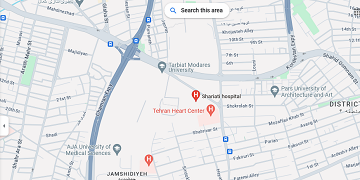Investigating the anti-photoaging properties of Bacillus subtilis cell extract and extracellular vesicles derived from B. subtilis in human skin fibroblast (HDF) cells model
Summary of the necessity of project implementation
The skin is the largest organ of the human body, which covers the external part of the body and creates an important protective barrier against many external factors, therefore, the natural structure and proper functioning of the skin are vital both in terms of personal appearance and general health of the body. is considered Various factors of internal or external origin can threaten the health of the skin and its natural function. Decreasing the physiological function of skin cells, along with exposure to ultraviolet rays, stress, free radicals, and chemicals are among the most important factors that damage the skin (5). Meanwhile, UV rays, as the most abundant external factor, can potentially cause wrinkling, dryness and skin inflammation. The active ingredients in sunscreens are the components responsible for protecting the skin from the harmful effects of ultraviolet rays. Based on available information, only two substances, zinc oxide and titanium dioxide, can be classified as safe and effective. Twelve other substances were not recognized as safe and effective due to insufficient information (18). Various researches have proved the role of probiotic microorganisms in the prevention and treatment of some diseases such as gastrointestinal diseases and cancer, accelerating the healing process of stomach ulcers, regulating the body's immune response against pathogenic agents, as well as their antioxidant properties (21-24). Bacillus subtilis is an aerobic gram-positive soil bacterium. In recent years, significant progress has been made in the scientific evaluation and studies on the probiotic Bacillus subtilis, that the possible mechanisms of action such as antimicrobial effect with the synthesis of antimicrobial substances, anti-diarrheal effect, immune stimulating effect, competitive elimination of pathogenic agents, prevention of intestinal inflammation and the normalization of intestinal flora has been shown. Despite the short-term and long-term effects of probiotics on human health, keeping and using them alive is associated with challenges. A significant percentage of probiotic microorganisms are lost during the fermentation process as well as their formulation in the form of food supplements, thus affecting the efficiency of these steps. Bacterial cells communicate with host cells and other bacteria through the release of membrane vesicles called bacterial extracellular vesicles (BEVs). Since these membrane nanovesicles can be engineered to perform specific interactions and functions, BEVs have great potential as It has new diagnostic and treatment tools. Some BEVs have the ability to stimulate immune responses, transport drugs, have anticancer effects, or may be associated with certain types of cancer. In this way, they can be used in cancer treatment, making vaccines or in diagnosing some diseases (32). Considering the role of UV-B rays in skin inflammation and the induction of various diseases in it, trying to find effective compounds with the ability to protect the skin and neutralize inflammation in it becomes very important. Therefore, investigating and proving the anti-inflammatory properties of compounds such as bacterial extract on skin cells can be considered as a promising initial step in the development of a new therapeutic method to deal with skin diseases. Despite the efforts made to create a cellular model of anti-photoaging, there is no uniform valid model to investigate this property. Therefore, it is expected that the results of the upcoming study, in addition to creating a suitable cell model, will evaluate a new treatment method in dealing with the harmful effects of UV rays on the skin.
Start year: 2024
Project manager: Elahe Metousli




Send to friends